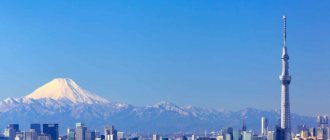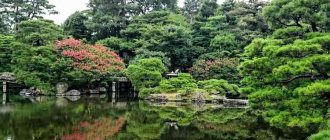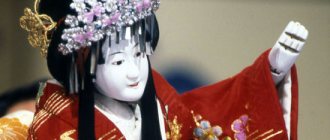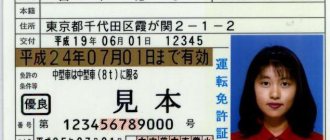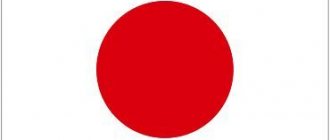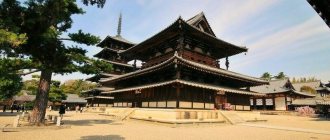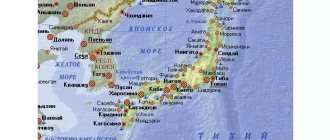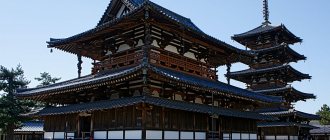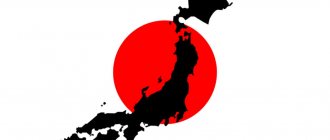Description of China and Japan
China is one of the most amazing countries in the world. Printing , the production of gunpowder, and porcelain originated here The first silk appeared here . The territory attracts the attention of a large number of historians and travelers.
Located in the southeast of the Asian continent , its outline resembles a soaring bird in the sky. According to historical development data, it dates back more than 5 thousand years .
The territory of the state is huge - about 10 million square meters. km . It is inferior in area to Russia and Canada. It ranks first in the world in terms of population.
Locals and tourists call it the Celestial Empire . The ancient Chinese believed that their country was the only one under the protection of heaven .
Japan has a thousand-year history. A land of contrasts . Incompatible things combine here: rice cultivation in agricultural areas, the large population of Tokyo, Buddhist monks and solemn rituals. The largest cities in the territory - Honshu, Kyushu, Hokkaido, Shikoku - occupy 97% of the state's territory.
The unofficial name is the Land of the Rising Sun. Among the Japanese, the common name is “Nihon” - the birthplace of the Sun. In 1945 , Hiroshima and Nagasaki were hit by a nuclear bomb dropped by the United States. Having survived the tragedy, Japan was able to recover. Modern Japan ranks 10th in development after Canada , Switzerland , and Ireland .
The Japanese are sensitive to historical continuity. Despite their conservatism, the Japanese people are quite modern .
The government spends huge sums on the development of science.
International relationships
The Celestial Empire borders on 14 countries, holding the record for the number of neighboring countries. As with everything in this world, the Chinese have a special approach to international relations. They put this approach into the form of certain principles that they still follow today.
Principles of foreign policy:
- respect for other people's boundaries;
- non-aggression;
- non-interference in the internal affairs of other states;
- equality;
- peace with everyone.
The Chinese people have always valued their territorial integrity. Violation of state borders is perceived by every Chinese as a personal insult. In addition, the PRC is constantly engaged in various disputes about the ownership of certain lands. For example, China managed to take away part of a mountain range from Tajikistan.
Despite its friendliness, China has an old enemy - Japan. In the 30s of the last century, the long-term occupation of China by Japan began. It was accompanied by cruel treatment of the population, devastation of land and seizure of resources. During the 14 years of Japanese presence in China, about 36 million Chinese were killed. Torture, experiments on people, slavery, violence - the people of China experienced all this.
Why China and Japan are similar
The only reason in which we can talk about the common features of China and Japan, about the similarity of the two states, is their belonging to Eastern culture . Only in these states does religious development have enormous influence. Speaking with historians involved in development issues, one gets the impression that, on the contrary, there is nothing in common.
The development of any country is determined by its location and historical past. The Celestial Empire has a deep history - more than 3.5 thousand years . For a long time, the whole world took Chinese opinion into account. Back in the 18th-19th, Mongolia and Tibet were subordinate to him.
Mention of the Japanese as a nation dates back to later centuries. They opened their borders to foreigners only 150 years ago.
Social problems
Along with the economic leap, the country has acquired not only environmental problems, but also social ones. Many people (especially rural residents) cannot receive basic medical care and education. There is also a colossal difference in the incomes of the urban population and the rural population. The issue of employment for graduates of higher educational institutions is acute, so young, educated people are trying to leave the country. The shortage of qualified specialists is also a serious economic problem for the country.
Culture of countries
The difference between Japan and China is in cultural development, although there are points that overlap with each other.
Japan:
- The process of drinking tea is not just satisfying the physiological needs of the body. This is a whole ceremony containing a lot of traditions. Buddhists made the process meaningful ;
- kimono 7 belts are worn underneath it . Summer kimono - yukata;
- They preach two religious movements - Shintoism and Buddhism. The first movement appeared in ancient Japan;
- The rock garden bears the cultural heritage of the Land of the Rising Sun.
China:
Once here, it is difficult for a Westerner to understand the cultural heritage. For a long time, the heritage was protected by local residents; only in the 19th century did European colonialists destroy the self-isolation.
Factors influencing the development of cultural heritage:
- lack of external influence;
- conservatism and deep respect for the past;
- influence on the development of Buddhism , Taoism;
- Confucian ideals;
- a large number of heritages belonging to different peoples of the world are mixed.
Differences and similarities in customs
| China | Japan |
| I don’t take off my shoes when entering the house. | When entering a hospital, home, or restaurants, you are required to take off your shoes . If during a visit to the establishment you need to visit the toilet, customers will be provided with special slippers |
| There is no bow in greeting. He may make a small bow, and only in case of deep respect for the interlocutor. In ancient times, when visiting the imperial house, the guest had to make 9 bows to the floor | Bowing is an integral part of life. By observing, you can see how bows are made while talking on the phone. The depth of respect depends on the degree of inclination . The lower it is, the greater the respect for the interlocutor |
| Confucianism, Taoism, Buddhism | Shintoism - everything around us is endowed with divine influence. They believe in the power of amulets |
| Martial arts - Wushu, Kungfu | Sumo, Aikido, Karate |
| Among the popular products that are most often on the table are Peking duck , fried rice, turtle soup | Lovers of sushi and rolls . All raw fish dishes are popular |
| Sitting on chairs | Sitting on their knees during meals, tea ceremony |
| Acupuncture has become widespread in medicine. The point in the body corresponds to the organ requiring treatment | Hand pressure is used during treatment. |
| The main symbol is the dragon | Symbol - sakura |
Definition of the concept
So, "The Celestial Empire" is a Chinese term that means the whole world, but later it came to be used to name the territory over which the emperor ruled.
During the reign of Emperor Zhuoi-Gong, Confucianism regarded him as a representative of Heaven, and the territory subject to the most worthy was called the Celestial World, the main temple of which was the Temple of Heaven.
The center of the world, according to Confucianism, was the imperial court. The Chinese emperor, as Chinese classical political thought maintained, was the ruler of the world, and foreign countries were his vassals.
Religious views
How else is Japan different from China? Of course, religion. In modern China, there are several religions that are closely related to each other:
- Confucianism - appeared in the 6th century BC. She prescribes the relationships of parents with children, brothers, friends, husband and wife;
- Taoism - originated in the north. The main idea is movement along the path of Tao. They believe in the immortality of the soul;
- Buddhism - came from India. Adapted to Chinese life. Every resident must achieve nirvana, sacrifice themselves to atone for sins.
Japan
Shintoism is a belief in the spirituality of nature . Each object has its own soul - a stone, a plant .
The main principle is the unity of nature and man. In the religious movement there is no division between good and evil.
Buddhism appeared in the mid- 6th century , after which it quickly spread among the population.
Belief in nirvana, reincarnation. They believe that there is life after death. There are no magnificent ceremonies of worship.
Attractions
The Celestial Empire is a real tourist paradise. Anyone who goes on vacation to this magical country will definitely find a place to their liking.
Perhaps the most famous landmark in China is the Great Wall. The construction took 10 years. It was intended for defense against nomads, marking the border of the state, and also helped to unite territories that did not have internal unity. Today the wall is the most visited tourist spot.
In 1959, after the construction of a power plant in Zhejiang, a unique underwater city appeared. The centuries-old buildings sank to a depth of about 40 meters and can only be visited in the company of divers.
China's first emperor, Qin Shi Huang, always thought big. At the age of thirteen, he began to arrange his tomb. To protect it, the young ruler ordered the creation of a thousand-strong army of clay warriors. Moreover, they are all made with different faces and exclusively by hand. This attraction is listed by UNESCO and is a World Heritage Site. When arriving on an official visit, all top officials of states must visit the tomb with the terracotta army.
Panda is a symbol of the Celestial Empire. Everyone loves these cute black and white bears. Previously, it was legal to hunt pandas in the country, so the species began to decline rapidly. Now the government is fighting poaching. The environmental situation is also a mortal threat to animals.
In Sichuan province, you can visit a nursery for these endangered animals, where specialists care for them and try to preserve this species. This place is 10 km from Chengdu city. Tourists are offered a three-hour excursion, where the guide not only shows the animals, but also tells everything about pandas.
Climate in Japan and China
Japan is an island state consisting of more than 3,000 islands. The climate, depending on the location, has 4 seasons . At the same time, it can be very cold in the north, and hot in the south. The climate largely depends on the seasonal winds coming from the continent. The southern part of the islands is considered subtropical , due to which there is a lot of precipitation.
China is a relief terrain, the climate varies depending on the elevations. There is a lot of precipitation on the plain, and dry, cold weather sets in in winter. Temperatures vary depending on the amount of precipitation.
Three climate zones : temperate, tropical, subtropical.
What is the difference between an insurance pension and a social and funded pension: the difference is who receives.
What is the difference between a hostel and a hotel: what is it, the difference, the difference can be read hereWhat is the difference between coloring, highlighting and tinting: https://gderaznica.ru/beauty/melirovanie-okrashivanie-i-tonirovanie.html
How much does a trip to China and Japan cost?
The ticket price depends on the place of departure. If you fly from the Far East, the price varies from 11-17 thousand rubles . A ticket from Moscow will cost 30 thousand rubles , from St. Petersburg – 33 thousand rubles .
To visit Japan you need a visa. But registration is free if you apply yourself through the embassy.
A trip to China will cost from 40,500 to 56,000 rubles . Visa required. Registration is paid. Regular 1500 RUR , multiple entry – 4500 RUR . With urgent registration, the cost increases and ranges from 2400 to 5400 rubles .
